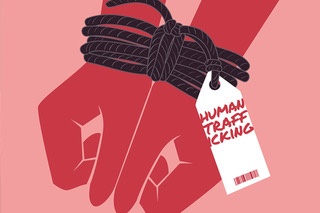
Last week 96 Ugandan girls aged between 14 and 18 were stopped at Jomo Kenyatta international airport in Kenya while trying to board a flight to the United Arab Emirates. The girls were intercepted by Kenyan authorities after a tip-off that the girls were being trafficked.
The only unusual thing about this story is that the girls were found before they left the continent. In recent years, Uganda’s human trafficking problem has been brought to the world’s attention, as its government has been criticised for not fully meeting the minimum standards necessary to eliminate human trafficking. It is thought that over 140,000 Ugandan girls are working in Middle Eastern countries, notably UAE, Dubai, Qatar and Saudi Arabia. The majority of these are victims of human trafficking, abuse, and exploitation; many of these young girls are convinced to move to the Middle East by Uganda-based labour-recruitment agencies who make them false promises of employment. If that weren’t horrific enough, they are often forced into exploitative jobs and even prostitution.
Why, in 2020, are the numbers of Ugandan girls trafficked so high? The main issue is the country’s poverty and low employment, which forces young people to take drastic measures which make them vulnerable. Due to the number of girls taken out of school to provide for their families, it is often girls and young women who are put into these dangerous situations. It is an epidemic that undoubtedly disadvantages and endangers women. Uganda’s human trafficking problem will only improve if girls’ education increases and youth unemployment decreases.
The interception of the girls in Kenya is part of the Kenyan and Ugandan’s police force’s collaborative effort to combat the terrible issue of trafficking. Though the Ugandan government has not sufficiently dealt with the country’s widespread trafficking, NGOs have made it their aim to put an end to child exploitation. Make a Child Smile is just one example of such charities, who raise awareness of Uganda’s trafficking problem and empower potential victims. These charities have also assisted in paying for the rescue of young girls in danger in places like the UAE.
This story reveals just how dire the situation is in Uganda, showing that large numbers of young girls still face exploitation through trafficking. Despite the efforts of the Ugandan police force and charities, there is clearly more to be done. This is something that, in 2020, the Ugandan government, as well as the rest of the world, must not allow to continue. Otherwise, these 96 girls may be trafficked again, successfully, and vulnerable children will continue to be at risk.
-Phoebe Cawley
Junior Girl
Girl Museum Inc.
